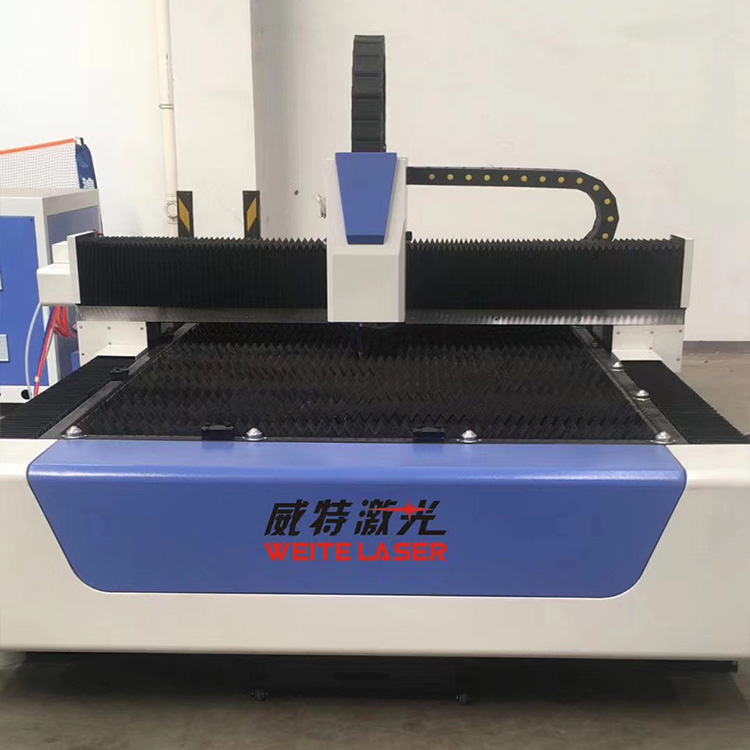- Español
- Português
- русский
- Français
- 日本語
- Deutsch
- tiếng Việt
- Italiano
- Nederlands
- ภาษาไทย
- Polski
- 한국어
- Svenska
- magyar
- Malay
- বাংলা ভাষার
- Dansk
- Suomi
- हिन्दी
- Pilipino
- Türkçe
- Gaeilge
- العربية
- Indonesia
- Norsk
- تمل
- český
- ελληνικά
- український
- Javanese
- فارسی
- தமிழ்
- తెలుగు
- नेपाली
- Burmese
- български
- ລາວ
- Latine
- Қазақша
- Euskal
- Azərbaycan
- Slovenský jazyk
- Македонски
- Lietuvos
- Eesti Keel
- Română
- Slovenski
- मराठी
- Srpski језик
Laser Cutting Machine Typesetting Precautions
2022-01-22
Laser cutting machine typesetting precautions
1. Reasonably plan the cutting route
The finished part will sometimes tip over, and if the laser cutting head is rerouted again, it may cause damage to the cutting head and cause losses. Therefore, it is necessary to plan a reasonable path during typesetting, detour the already cut parts to avoid collision, and at the same time choose the best cutting route to reduce cutting time and improve work efficiency.
2. Grasp the part spacing
When cutting thin plates, the spacing between parts can be appropriately narrowed. When cutting thick plates and hot plates, pay attention to leaving enough gaps in typesetting, because the heat of thick plates and hot plates is relatively large, otherwise it is easy to cause adjacent parts to be affected by heat. Large, or sharp corners and small graphics burning edges appear, affecting the cutting quality.
3. Corner cutting processing
When cutting corners with deceleration, long cutting time will melt the metal materials at the corners, and the increase of the heat-affected zone will reduce the quality of the products. A small radius can be generated at the corners, so that high-speed cutting can be maintained, and good cutting quality can be obtained.
4. Lead Settings
When cutting thicker plates, in order to better connect the kerf and prevent burns at the beginning and end, a transition line is usually drawn at the beginning and end of the cutting, respectively called lead and tail, lead and tail. It has no effect on the workpiece itself, so it should be arranged outside the scope of the workpiece, and at the same time, it should be noted that the leads cannot be set in places such as sharp corners that are not easy to dissipate heat.
5. Common edge cutting
Co-edge two or more parts into a combination, so that large batches of regular graphics can be co-edge as much as possible, which can shorten the cutting time.

1. Reasonably plan the cutting route
The finished part will sometimes tip over, and if the laser cutting head is rerouted again, it may cause damage to the cutting head and cause losses. Therefore, it is necessary to plan a reasonable path during typesetting, detour the already cut parts to avoid collision, and at the same time choose the best cutting route to reduce cutting time and improve work efficiency.
2. Grasp the part spacing
When cutting thin plates, the spacing between parts can be appropriately narrowed. When cutting thick plates and hot plates, pay attention to leaving enough gaps in typesetting, because the heat of thick plates and hot plates is relatively large, otherwise it is easy to cause adjacent parts to be affected by heat. Large, or sharp corners and small graphics burning edges appear, affecting the cutting quality.
3. Corner cutting processing
When cutting corners with deceleration, long cutting time will melt the metal materials at the corners, and the increase of the heat-affected zone will reduce the quality of the products. A small radius can be generated at the corners, so that high-speed cutting can be maintained, and good cutting quality can be obtained.
4. Lead Settings
When cutting thicker plates, in order to better connect the kerf and prevent burns at the beginning and end, a transition line is usually drawn at the beginning and end of the cutting, respectively called lead and tail, lead and tail. It has no effect on the workpiece itself, so it should be arranged outside the scope of the workpiece, and at the same time, it should be noted that the leads cannot be set in places such as sharp corners that are not easy to dissipate heat.
5. Common edge cutting
Co-edge two or more parts into a combination, so that large batches of regular graphics can be co-edge as much as possible, which can shorten the cutting time.



